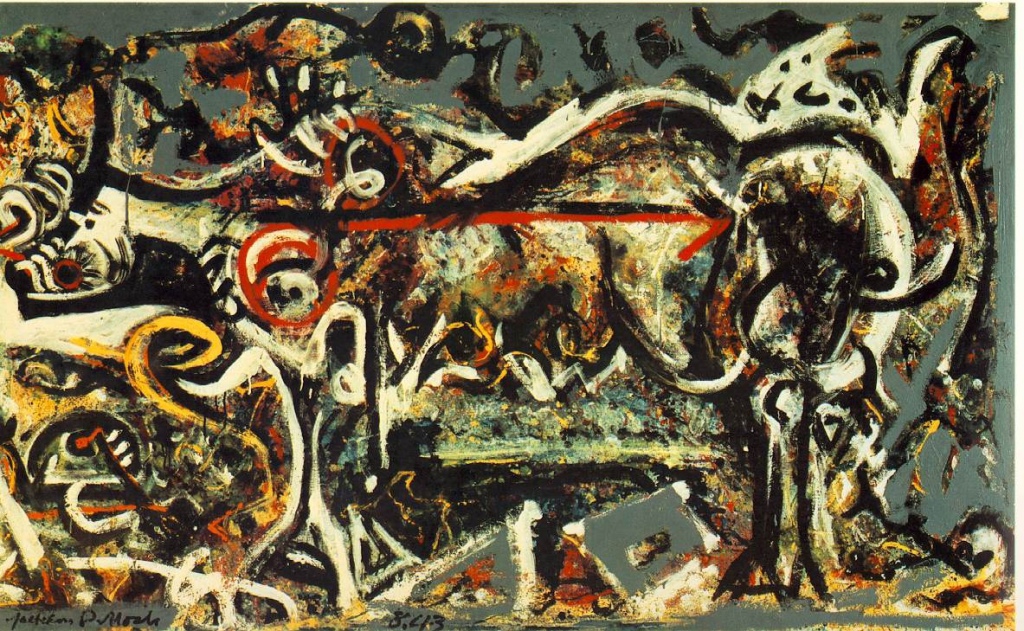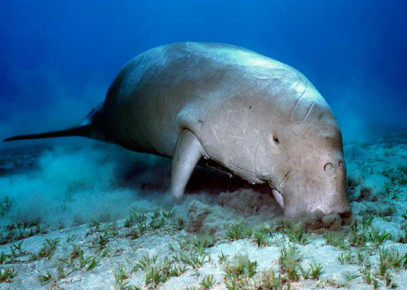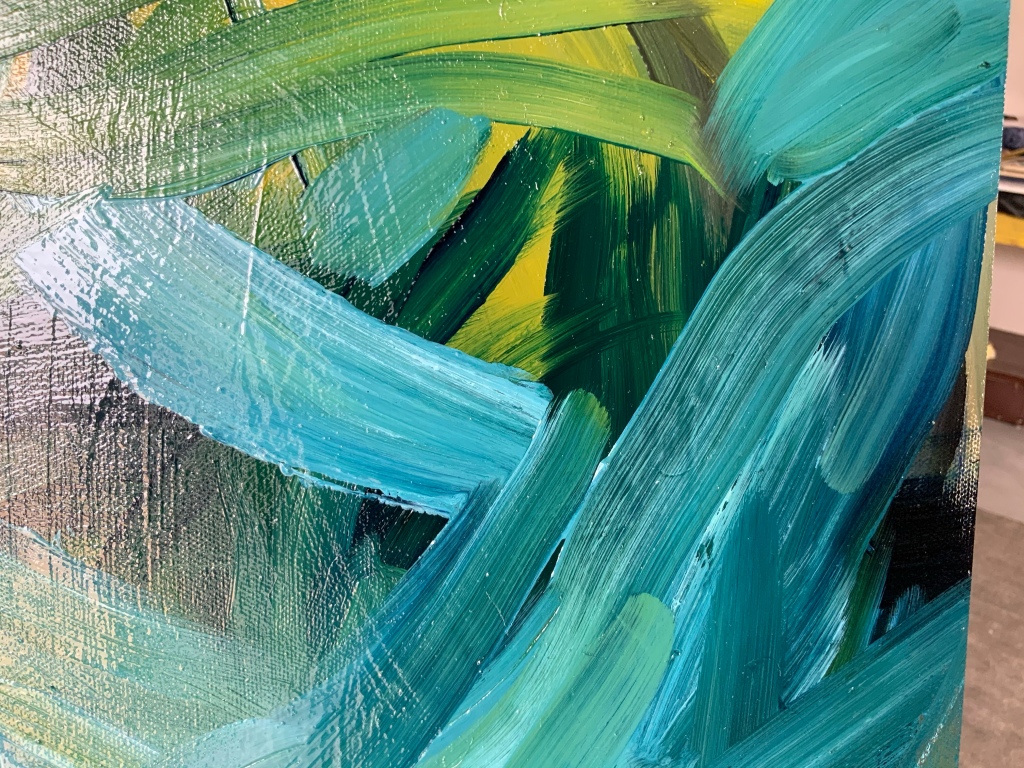Introduction
It is suggested that I review my achievements so far and also reflect on which projects I’ve enjoyed. I feel I could have explored colour more – made more enquiries into how it applies in brush marking – oil painting. I found doing self portraits more challenging than still lives – although at the stage when doing still lifes, I was quite despondent about my level of achievement. I now think it has a lot to do with spending more time painting and developing my work and ideas. I need to stay with the subject and keep looking at what I am copying or re defining in my own work. Looking back, a lot has to do with representation of the exercises and trying to be realistic and according to the exercise requirements. I learnt from experimenting to go with a process and see where it takes me – investigating and being more open to the work process, rather than the expected outcome. My reasons for painting is currently to investigate the process of how to get to tone and form. I was reading Ruskin – Lectures on Landscape side by side whilst I finished Part 4, as well as Romantic Things: a tree, a rock, a cloud, by Mary Jacobus.
I am drawn to the work of F Auerbach, Howard Hodgkin, Willem de Kooning, Adrian Ghenie for their expressiveness and use of the materiality of paint to represent in their work. I love the colours, techniques of using big brushes, a palette knife, scraping paint in the wet and dry stage away, layering the work, as well as the the smooth finished works of Ghenie and de Kooning. So much of history of art and use of technology comes to play. I am also attracted to figuration within this process. I looked at De Koonings’s Woman series and how his technique of applying paint added to his anstraction and mark making. In the first feedback from my tutor for part one she commented in her written feedback on a blog I did on the interesting similarities I found in the work of Auerbach and A Ghenie, and that she saw it as an insightful point that I choose to connect the two artists whom both are interested in colour and how this affects our reading of pictorial space. Having spent more time on the work process of W de Kooning I think I know understand my liking even better.
PROJECT Different ways of applying paint

I looked at an older work of Auerbach on the Tate website ( Nude, 1959) where I learnt how he could only afford to buy white and black pigments. It shows a lot of built up and scraping. His mark making develops over time; with brushes, palette knives, putty scrapers and sometimes paint squeezed directly from the tube. I started this self portrait below more than 2 years ago, then left it. I decided to pull it out and rework and learn on this project. My idea was to only work in grey with fewer greens/pink/yellow tones. I used a palette knife and worked from a photo image. The work process is to work in IMPASTO EFFECTS


Exercise Dripping, dribbling and spattering
I looked at the work of a contemporary artist, Daniel Crew-Chubb who almost builds his work by laboriously dying and staining his canvases, cuts, tears, staples, and stretches, then smears on paint and line draws with charcoal. His work is created in series, working on multiple canvases at the same time. He does not focus on landscape – more figurative in his work. The surfaces become layers of material – a type of collage canvas is the end product. The surface gets a history – I do like this way of making and involvement or interaction with material as the subject of forming these works, become part of the making. This is something that my mind has opened to in the course of the OCA led Zoom sessions during the last month. It reminds me of youtube videos of Jackson Pollock where he expressed technique as ‘just a means at arriving at a statement’. I am also reminded of Vija Celmins who in the 60’s started moving away from action painting – she called it, trying to tone down and started object making. Here is almost a tension as the both artists goes on a way to make and express, but use different techniques to arrive at the final point of making/creating of a work of art.
Vija Celmins said: Making, with their body, their hands, touch, stroke
Celmins next turned her gaze to the parched and dusty surfaces of rocky desert landscapes and cosmic galaxies. This trio of primal motifs—water, earth, and air—has allowed Celmins to explore her interest in material surface through subject matter in liquid, solid, and gassy states, each of which finds different translations into the image’s graphite surface. Perhaps more importantly, in her treatment of the sea, desert, and cosmos, Celmins has been able to study perception from different points of view: from above, from straight ahead, and from below. (B.H. Friedman once observed that Pollock had distinct postures depending on whether he was looking up, ahead, or down. For Pollock the act of looking seems to have involved his whole body and being.
(Image Journal.org: Issue 59 James Romaine, Active sight: Vija Celmins and Jackson Pollock from Pictorialism to Perception.
My work started out on a role of paper I layed out on the floor – I have sea grasses in my mind and I want to find my way into the layering of these grasses on the seabed. I have green ink ( Lukas Olive colour), blue and yellow acrylic fluid paint as well as a white tube of acrylic titanium white. I start off by throwing the ink onto the paper in ways I would think the seagrass is moving on the bottom of the ocean. I draw into it with a brush and onto it with charcoal and then add acrylic medium as well as acrylic varnish. I want to create a layer of medium on the paper and see if I can layer of painted grass like lines on top of this.

I start adding more paint after the varnish created a lovely almost plastic layer on the first painting. I add white and blue into my pallet for the next painted layer – I like the tension between transparency and opacity of the layers .


I placed a sheet of vellum paper on top of this work – still being wet.
After a few hours I could not remove the vellum from the sheet and decided to cut out the pieces of vellum that stuck to the paper support. I loved the butteriness of the layers on the paper and decided to push further on this exploration. I feel the work is becoming a collage – the colours reminds me of work I saw of Adrian Ghenie at the Venice Biennale . The vellum became an interesting surface, as it also has hardly any grain.


My learning process now takes me to look at above work of Ghenie and consider to use scrapers for the next application of paint on the work. The surface is not so flat every where – the area where I pasted the vellum on with acrylic gel is full of folds and ripples. I do think it can become an interesting surface if I give it enough time to dry. I also need to consider the space I am working in – it has become rounded and less blue is visible. I consider to cut it into two works and draw a line, where I think to cut it, with charcoal. I like the one on the left, without any collage. I can change the format and it resembles the seagrass floating. For my I think in this exercise I came to explore how visual similarities can be made and a viewer will have an experience of something being revealed or hidden. Maybe it is more of a experience for me in the making, but I do think it was a great exploration.
Thinking about tutor B Eccleshall’s advice on the recent Zoom session by encouraging us as students (learning) to develop a voice through comparing our work with others (influence/infection/stealing) and to interrogate that relationship to reveal what underpins one’s approach to making.
Preparing a textured ground
Impasto – high relief and using a dry brush method to apply transparent paints in layers. Lucian Freud created a gritty, scumbled-on texture by scraping color onto the canvas. Each pass with his brush adds a little more thickness onto the dried paint underneath it. Looking at his self portraits I see how impasto adds character to his face, but gave the painting depth.
Mixing materials into paint
I collected sand outside my house and applied it on Vellum. It tried my husbands carpentry glue and added some of the thin wood shavings onto the support. I read that in his work, She Wolf, 1943, Jackson Pollock created texture by adding sand onto wet paint on the canvas and giving it a gritty texture.

Below is a work I started by glueing dried seagrass onto the canvas support with gel.

PROJECT towards abstraction
Here I used normal house hold clingwrap plastic and placed it onto the wet painted ground surface and made marks with my fingers as well as moving the soft plastic into folds and then lettimg it dry. I added a soft wash of blue onto the dried ground surface, now showing some texture and reminding me of the sea grass.

Abstraction from study of natural forms
I made a new painting in the same process, but using a different colour and placed the plastic onto that and put the imprint onto the original surface. . In Pollock’s drip paintings with enamel paints he really used the paints’ inherent properties to create the nice marks, blobs and lines of colour running into each other. Here the low viscosity of the paint enhanced his gestural movements. I still had control as to my choice of tools and medium I wanted to use. This work could become more densely layered by going back into it in a wet or dryer stage.

I looked at seagrass I collected on a very polluted beach a while ago. I am aware that at that area of the coast green turtles and the dugongs feed on these grasses. I would really like to understand why the beach was covered with these half dead grasses.

I used a big roll of paper as well as A4 drawing paper to make the following paintings.
On the painting below, I used the sand imprints, rubbed acrylic medium on them and then made an imprint on that. The drawing that stayed behind was used to add a few lines to resemble grass and then I covered it with Acrylic Gloss varnish. I let it dry over night.
The next day I decided to work with some green acrylic ink – I tried a throwing process to get the ink onto the paper in some shapes that could imitate the sea grass. I am thinking about the artistic intent whilst at work. Is the work below not a true abstraction, as it is connected to the seagrass which I am trying to represent?

The Gulf is 989 km long and 50 km wide and has an area of 251,000 km2. It has an average depth of 20 m and a maximum of 90 m. Its shallow nature, combined with the high-latitude geographical position and the presence of mountainous plateaus and deserts nearby, make the Gulf’s climate the most extreme endured by reef-building corals anywhere in the world. Nonetheless, the Gulf is home to about 40 species of scleractinian and 31 species of alcyonacean corals. The reef fauna represents a small but typical segment of that of the Indo-Pacific. I am thinking of a sea grass bed.


Abstract painting from man-made form

The following reading is very interesting:” I am thinking of abstract art as the project is ‘towards abstraction’, and the fact that everything we see, “appears to us in the shape of forms”, Pablo Picasso on figurative and non-figurative art. It becomes more clear in my mind that abstract and figurative art work can be… or is(?) representational – is the artist not always trying to represent something from the real world? That does not have to mean it is realism or realistic ( colour theory, from, perspective, proportion..) I would like to explore the sea grass and natural surroundings as paintings in an abstracted style.

I became more intrigued with the work of De Kooning and tried using his methods of viscous paint. I mixed linseed oil and normal sunflower oil as well as varnish into the oil paint. The result was an amazing soft, flow texture of paint with which I could create lovely brush strokes and build up layers of marks. It took long to dry between sessions, as I worked wet in wet, used a cloth to wipe out paint and layer again, when dry.


Landscape in Dubai
started off with looking at the dunes I started painting and then my own inquiry into the detail, the same with the beach paintings. I decide to work around this theme of looking and seeing more which leads to investigation and learning techniques and using paint and the support.



This exercise became an almost abstract study of the curls of the dried up twigs of this found bush. By using a photo image one can zoom to have better focus on specific lines and form.
